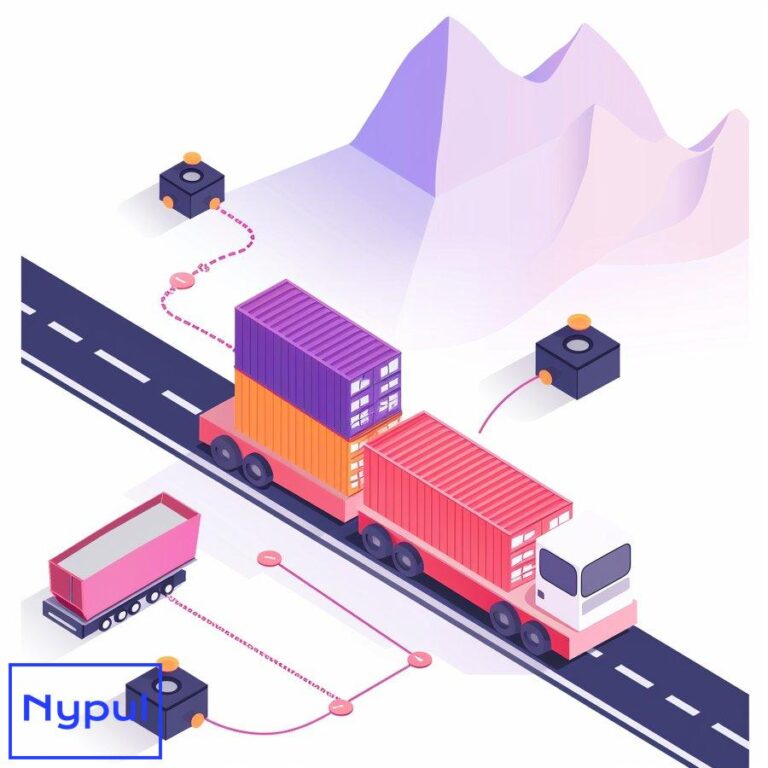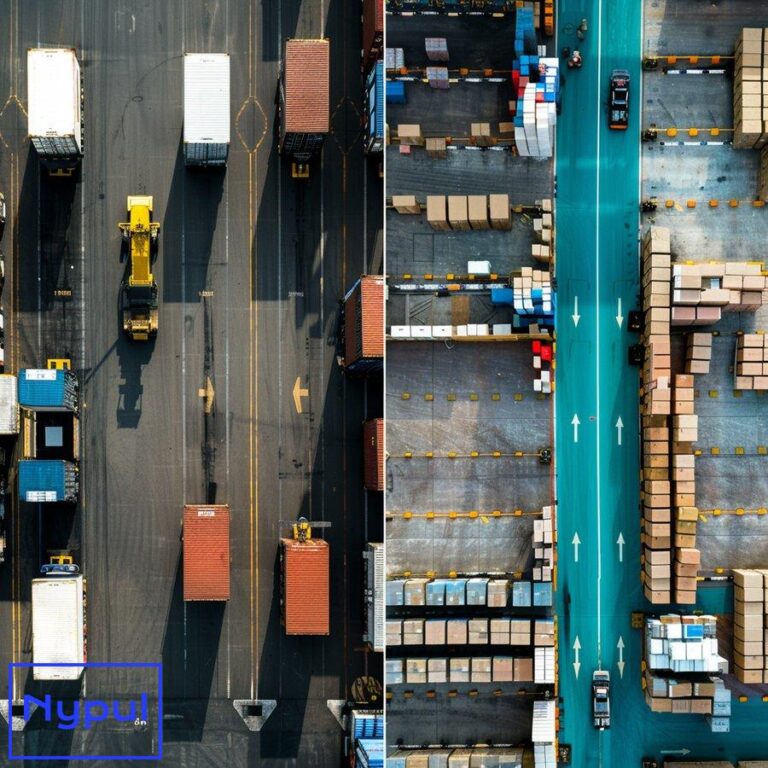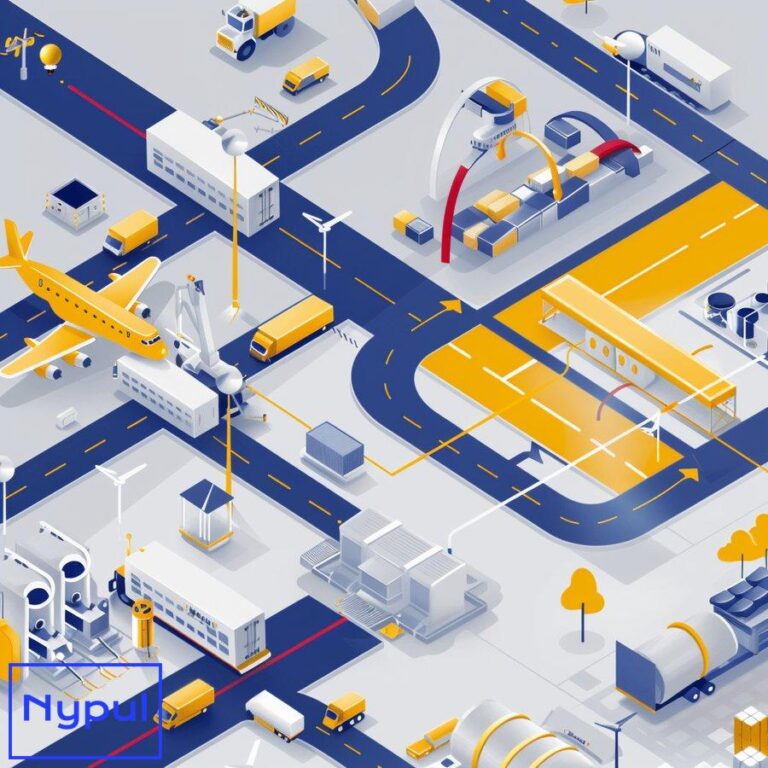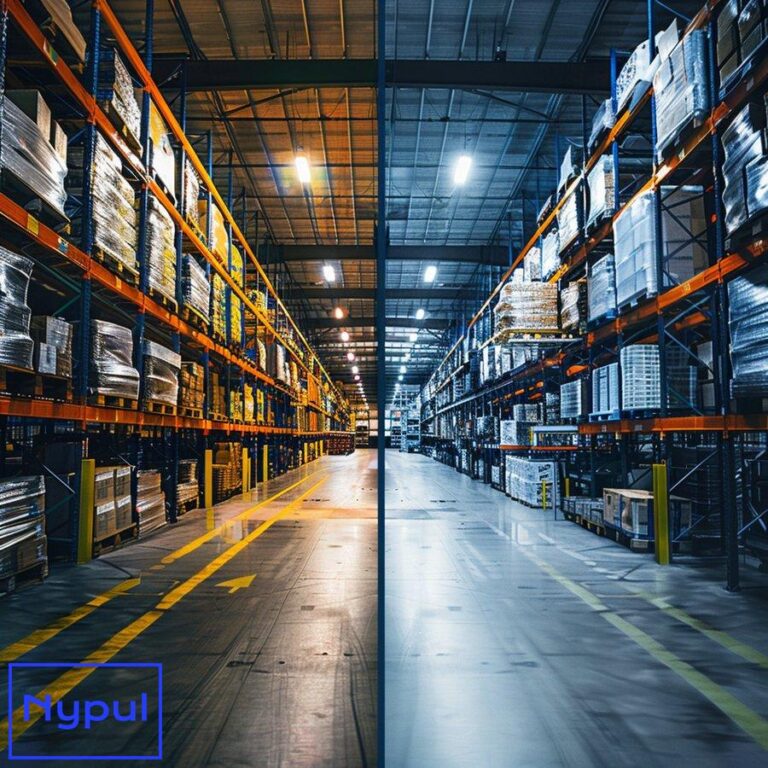How Do You Optimize Fuel Efficiency
What is Fuel Efficiency and Why is it Important in Drayage and Logistics?
Fuel efficiency is the measure of how effectively a vehicle converts the chemical energy from fuel into mechanical energy to move the vehicle and its cargo. In the context of drayage and logistics, fuel efficiency is crucial for several reasons:
-
Cost Savings: Fuel is one of the largest operating expenses for trucking companies. Improving fuel efficiency directly reduces these costs, boosting profitability.

-
Environmental Impact: Burning less fuel leads to lower greenhouse gas emissions and a smaller carbon footprint, aligning with sustainability goals.
-
Competitive Advantage: Companies that optimize fuel efficiency can offer more competitive pricing and win more business.
-
Regulatory Compliance: Stricter emissions regulations, such as California’s Advanced Clean Trucks rule, mandate the use of zero-emission trucks in drayage, driving the need for fuel-efficient technologies.
-
Customer Expectations: Eco-conscious consumers increasingly expect and demand sustainable shipping practices, including fuel-efficient transportation.
Improving fuel efficiency is a multifaceted challenge that requires a holistic approach encompassing vehicle selection, maintenance, driver behavior, route optimization, load management, and technology adoption. By implementing best practices in each of these areas, drayage and logistics companies can achieve significant fuel savings and environmental benefits.
How Can Vehicle Selection and Maintenance Improve Fuel Efficiency?
Vehicle Selection:
When selecting trucks for drayage operations, consider the following factors to optimize fuel efficiency:
- Engine Type: Modern diesel engines are more fuel-efficient than older models. Explore alternative fuel options like compressed natural gas (CNG) or liquefied natural gas (LNG) for even greater efficiency.
- Aerodynamics: Trucks with improved aerodynamics, such as those with fairings, side skirts, and low-rolling resistance tires, can reduce fuel consumption by up to 10%.
- Weight: Lighter trucks with high-strength materials like aluminum or carbon fiber can carry heavier loads while consuming less fuel.
Vehicle Maintenance:
Regular maintenance is crucial for maintaining fuel efficiency. Implement the following best practices:
- Tire Pressure: Properly inflated tires reduce rolling resistance and improve fuel economy by up to 3%.
- Oil Changes: Use the recommended grade of engine oil and change it at the manufacturer’s recommended intervals to ensure optimal engine performance and fuel efficiency.
- Air Filters: Clean or replace air filters regularly to maintain proper airflow and combustion efficiency.
- Aerodynamic Components: Regularly inspect and maintain fairings, side skirts, and other aerodynamic components to ensure they are in good condition and properly aligned.
By carefully selecting fuel-efficient vehicles and maintaining them to the highest standards, drayage and logistics companies can significantly improve their overall fuel efficiency.
What Driver Behaviors and Training Techniques Optimize Fuel Consumption?
Driver Behaviors:
The way drivers operate their vehicles has a significant impact on fuel efficiency. Encourage the following behaviors:
- Smooth Acceleration and Braking: Avoid sudden starts and stops, which waste fuel and increase wear on components.
- Maintaining Consistent Speeds: Use cruise control on highways to maintain a steady speed and avoid unnecessary acceleration and deceleration.
- Reducing Idling: Idling gets 0 miles per gallon. Shut off the engine when stopped for more than 30 seconds, unless in traffic.
- Anticipating Traffic: Look ahead and anticipate traffic conditions to avoid sudden braking and accelerating.
Driver Training:
Provide comprehensive training programs to teach drivers fuel-efficient techniques and best practices:
- Eco-Driving Courses: Offer hands-on training in eco-driving techniques, such as smooth acceleration, proper gear selection, and maintaining safe following distances.
- Feedback and Coaching: Provide regular feedback to drivers on their fuel efficiency performance and offer coaching to help them improve.
- Incentives: Consider implementing a fuel efficiency incentive program to reward drivers who consistently demonstrate fuel-efficient behaviors.
By promoting fuel-efficient driver behaviors and providing comprehensive training, drayage and logistics companies can significantly reduce fuel consumption and costs while improving safety and driver satisfaction.
How Does Route Optimization Contribute to Better Fuel Efficiency?
Route Planning:
Effective route planning is essential for optimizing fuel efficiency. Consider the following factors when planning routes:
- Distance: Choose the shortest route that avoids unnecessary mileage and detours.
- Traffic Conditions: Utilize real-time traffic data to avoid congestion and delays, which can significantly increase fuel consumption.
- Road Types: Favor highways over city streets whenever possible, as highways allow for more consistent speeds and less stop-and-go driving.
- Terrain: Avoid routes with steep hills or mountains, as climbing requires more fuel and accelerates wear on components.
Dynamic Routing:
Implement dynamic routing capabilities to adapt to changing conditions in real-time:
![]()
- Real-Time Traffic Updates: Integrate with traffic data providers to receive up-to-the-minute information on road conditions and congestion.
- Automated Rerouting: Use algorithms to automatically reroute vehicles around unexpected delays or incidents, minimizing fuel waste and delivery times.
- Driver Communication: Provide drivers with real-time route updates and instructions to ensure they can quickly adapt to changing conditions.
Route Optimization Software:
Utilize advanced route optimization software to plan and execute the most fuel-efficient routes:
- Algorithms: These tools use complex algorithms to analyze vast amounts of data, including traffic patterns, road conditions, and vehicle characteristics, to determine the optimal route for each delivery.
- Visualization: Route optimization software often includes intuitive visualization tools that allow dispatchers to easily monitor and adjust routes as needed.
- Integration: Many solutions integrate with other logistics systems, such as transportation management systems (TMS) and telematics platforms, to provide a comprehensive view of operations.
By carefully planning routes, adapting to changing conditions, and leveraging advanced software tools, drayage and logistics companies can significantly reduce fuel consumption and costs while improving on-time delivery performance.
What Load Management Strategies Can Reduce Fuel Usage?
Load Planning:
Effective load planning is crucial for optimizing fuel efficiency. Consider the following best practices:
- Load Balancing: Ensure that loads are evenly distributed across the vehicle’s axles to avoid uneven weight distribution, which can increase fuel consumption.
- Weight Limits: Stay within legal weight limits to avoid overloading, which can significantly increase fuel consumption and wear on components.
- Cube Utilization: Maximize the use of available trailer space to avoid unnecessary trips and reduce the number of vehicles required to move a given volume of freight.
Intermodal Optimization:
Intermodal transportation, which combines multiple modes of transportation (e.g., truck, rail, ship), can offer significant fuel efficiency benefits:

- Reduced Mileage: Intermodal transportation often involves moving freight over longer distances by rail or ship, which are more fuel-efficient than trucking for long-haul movements.
- Improved Load Balancing: Intermodal terminals can help balance loads across multiple modes of transportation, ensuring that each mode is used optimally.
- Reduced Congestion: Shifting freight from trucks to rail or ship can help reduce congestion on highways, improving fuel efficiency for all vehicles on the road.
Backhaul Optimization:
Backhaul optimization involves finding return loads for vehicles that would otherwise travel empty on the return leg of a trip. This can significantly improve fuel efficiency by:
- Reducing Empty Miles: Empty miles are a major source of fuel waste. Backhaul optimization ensures that vehicles are carrying freight for a larger portion of their total mileage.
- Improving Asset Utilization: By reducing empty miles, backhaul optimization helps drayage and logistics companies make better use of their existing assets, reducing the need for additional vehicles and drivers.
- Increasing Revenue: Finding backhaul loads can generate additional revenue for carriers, helping to offset the costs of fuel and other operating expenses.
By carefully planning loads, optimizing intermodal transportation, and maximizing backhaul opportunities, drayage and logistics companies can significantly reduce fuel consumption and costs while improving overall operational efficiency.
How Can Fuel Management Systems Enhance Overall Efficiency?
Fuel Tracking and Reporting:
Fuel management systems provide comprehensive tracking and reporting capabilities to help drayage and logistics companies monitor and manage their fuel consumption:
- Real-Time Data: These systems collect real-time data on fuel usage from various sources, including vehicle telematics, fuel cards, and manual entries.
- Reporting: Fuel management systems generate detailed reports on fuel consumption, costs, and efficiency metrics, allowing companies to identify areas for improvement and track progress over time.
- Benchmarking: By comparing their fuel efficiency performance to industry benchmarks or their own historical data, companies can identify opportunities to optimize their operations.
Preventive Maintenance:
Fuel management systems can help drayage and logistics companies proactively maintain their vehicles to optimize fuel efficiency:
- Maintenance Scheduling: These systems can automatically generate maintenance schedules based on vehicle usage, mileage, and other factors, ensuring that vehicles receive regular service to maintain optimal performance.
- Fault Monitoring: Many fuel management systems integrate with vehicle telematics to monitor for fault codes and other issues that can impact fuel efficiency, allowing for early intervention and repair.
- Maintenance Tracking: The systems track maintenance activities and costs, providing valuable data for budgeting and decision-making.
Driver Behavior Monitoring:
Fuel management systems can help monitor and improve driver behavior to optimize fuel efficiency:
- Idling Tracking: These systems track and report on excessive idling, allowing companies to identify drivers who need additional training or coaching.
- Speeding Monitoring: Fuel management systems can monitor vehicle speeds and alert managers to drivers who consistently exceed speed limits, which can significantly impact fuel consumption.
- Incentive Programs: By providing data on individual driver performance, fuel management systems can support incentive programs that reward fuel-efficient behaviors.
By leveraging the capabilities of fuel management systems, drayage and logistics companies can gain valuable insights into their fuel consumption, optimize their maintenance practices, and improve driver behavior to enhance overall efficiency and reduce costs.
What Alternative Fuels and Technologies are Worth Considering?
Alternative Fuels:
As the transportation industry moves towards a more sustainable future, alternative fuels are becoming increasingly important for improving fuel efficiency and reducing emissions:
- Compressed Natural Gas (CNG) and Liquefied Natural Gas (LNG): These fuels offer significant reductions in emissions compared to diesel and can provide fuel efficiency improvements of up to 10%.
- Biodiesel: Biodiesel is a renewable fuel made from vegetable oils, animal fats, or recycled cooking oil. It can be blended with conventional diesel to reduce emissions and improve fuel efficiency.
- Renewable Diesel: Renewable diesel is a drop-in replacement for conventional diesel that is made from renewable sources such as vegetable oils, animal fats, or waste oils. It offers similar emissions reductions and fuel efficiency improvements to biodiesel without the need for engine modifications.
Emerging Technologies:
Several emerging technologies have the potential to significantly improve fuel efficiency in drayage and logistics operations:
- Hybrid and Electric Vehicles: Hybrid and electric trucks offer zero-emission operation and can provide fuel efficiency improvements of up to 50% compared to conventional diesel vehicles.
- Autonomous and Connected Vehicles: Autonomous and connected vehicles can optimize fuel efficiency through advanced routing, platooning, and predictive maintenance capabilities.
- Lightweight Materials: The use of lightweight materials such as aluminum and carbon fiber in truck construction can reduce vehicle weight and improve fuel efficiency.
As the transportation industry continues to evolve, drayage and logistics companies will need to stay informed about the latest alternative fuels and technologies to maintain a competitive edge and meet increasingly stringent emissions regulations.
How Can Data Analysis Drive Continuous Improvement in Fuel Efficiency?
Data Collection and Integration:
Effective data analysis begins with comprehensive data collection and integration from various sources:
- Telematics: Vehicle telematics systems collect real-time data on vehicle performance, location, and driver behavior, providing valuable insights for fuel efficiency optimization.
- Fuel Management Systems: Fuel management systems track and report on fuel consumption, costs, and efficiency metrics, providing a detailed view of fuel usage across the fleet.
- Route Planning Software: Route planning software collects data on traffic conditions, road types, and terrain, which can be used to optimize routes for fuel efficiency.
Data Analysis and Visualization:
Once data is collected, it must be analyzed and presented in a way that enables informed decision-making:
![]()
- Key Performance Indicators (KPIs): Identify and track relevant KPIs such as miles per gallon (MPG), fuel cost per mile, and emissions per mile to measure and monitor fuel efficiency performance.
- Benchmarking: Compare fuel efficiency performance to industry benchmarks or historical data to identify areas for improvement and track progress over time.
- Visualization Tools: Use data visualization tools such as dashboards and reports to present fuel efficiency data in a clear and actionable format for managers and decision-makers.
Continuous Improvement:
Data analysis is not a one-time event but rather an ongoing process of continuous improvement:
- Feedback Loops: Establish feedback loops that incorporate data analysis into decision-making processes, allowing for rapid adjustments and improvements to fuel efficiency strategies.
- Collaboration: Foster collaboration between various stakeholders, including drivers, dispatchers, and maintenance personnel, to identify and implement fuel efficiency improvements.
- Training and Education: Provide ongoing training and education to drivers and other personnel on fuel efficiency best practices and the importance of data-driven decision-making.
By embracing data-driven decision-making and committing to continuous improvement, drayage and logistics companies can optimize fuel efficiency, reduce costs, and contribute to a more sustainable transportation future.





